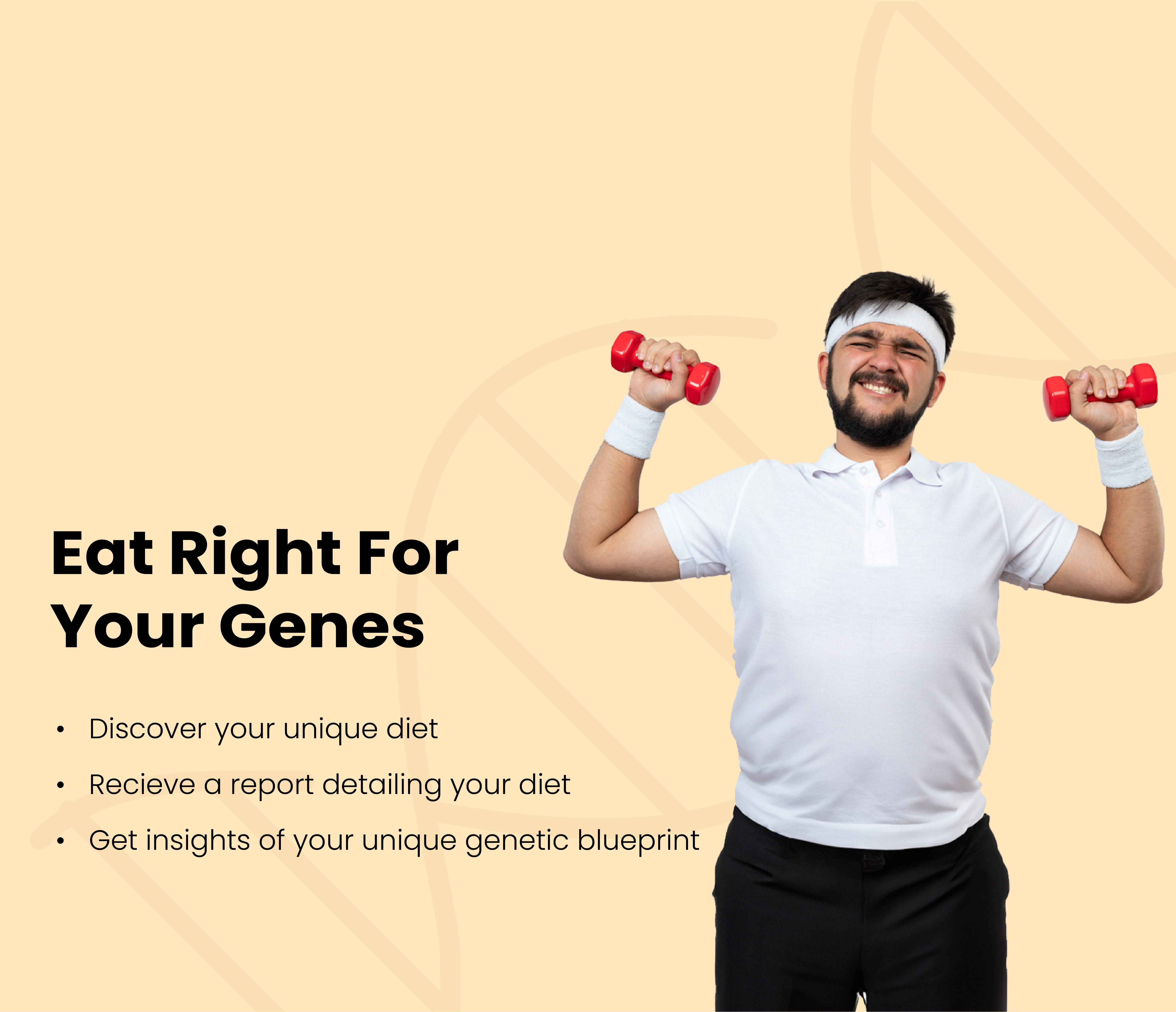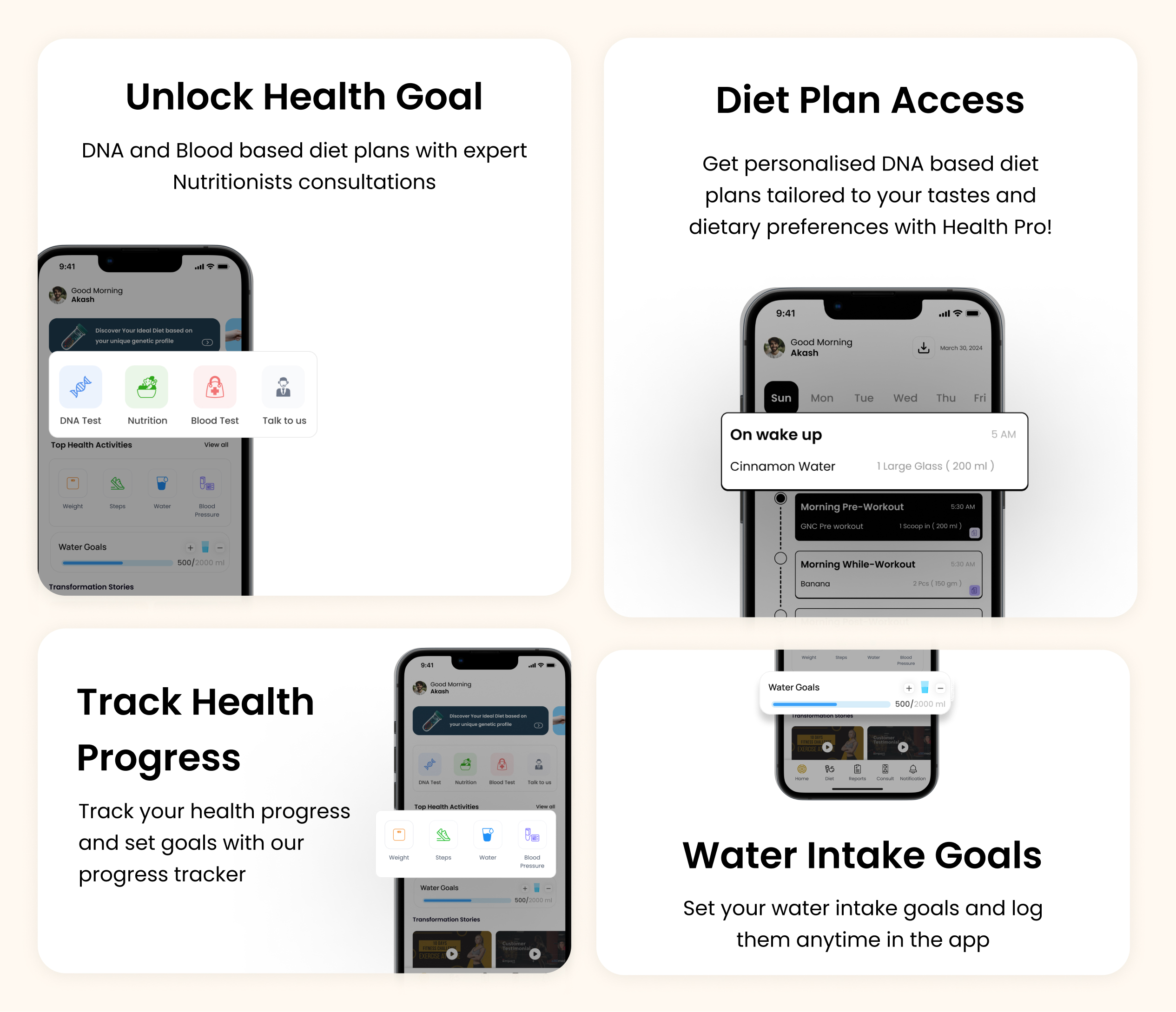





Discover your genetic secrets and elevate your health! Learn how your DNA impacts your traits, from nutrient absorption to fitness response and insights that guide your personalized wellness journey backed by your genetic blueprint!
What you'll get























Give Your Saliva Sample in the DNA kit
Return Your Saliva Sample DNA kit
Get Your DNA Report in 45 days in your unlock.fit app
Book a consultation with our Nutrigenomic Expert and Nutritionist
Get your personalised diet plan on the app
Frequently Asked Questions



74-S Sector-8 Jasola Vihar South Delhi, New Delhi 110025
© 2024 unlock.fit. All Rights Reserved